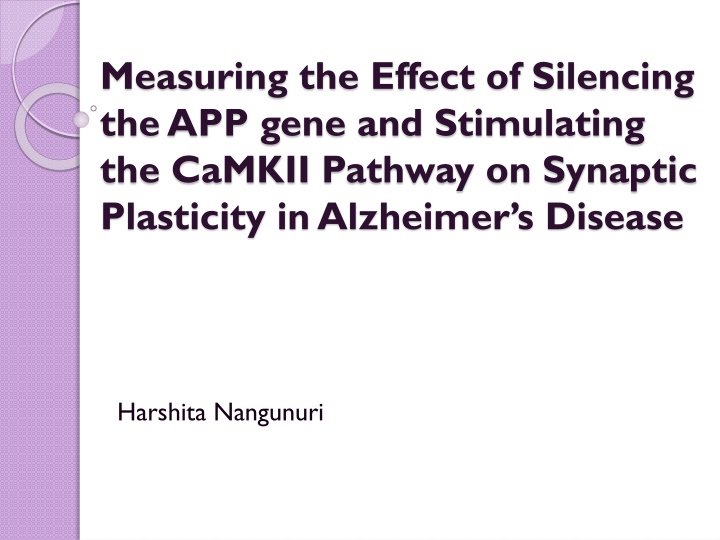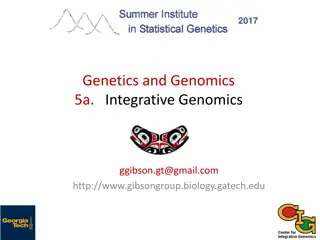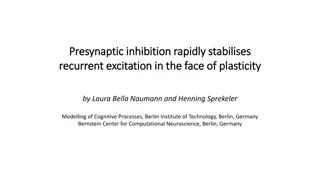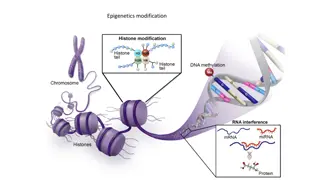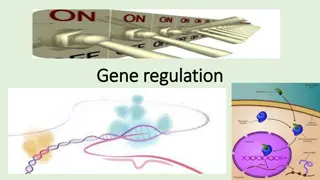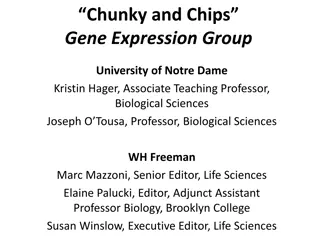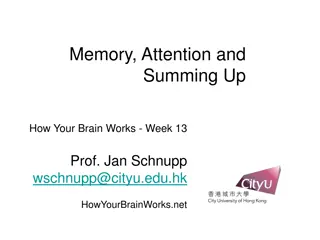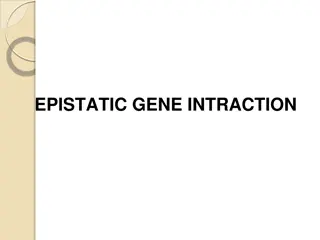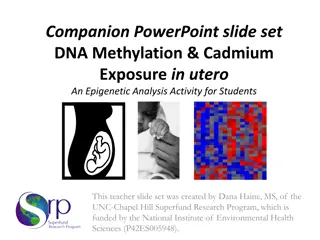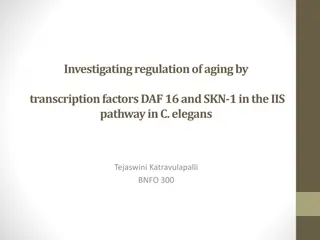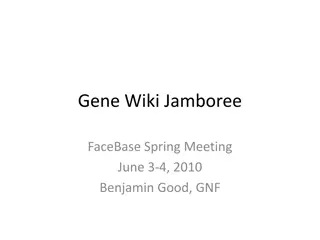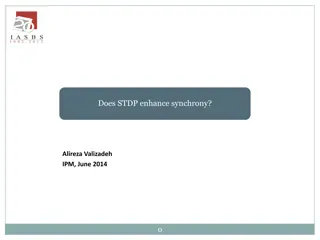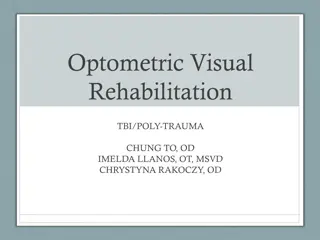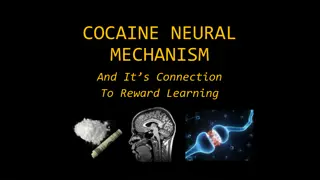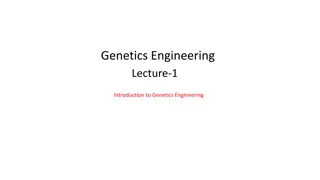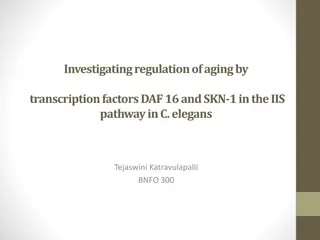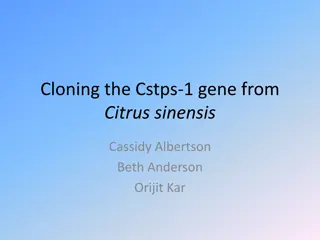Investigating the Impact of Silencing the APP Gene and Stimulating the CaMKII Pathway on Synaptic Plasticity in Alzheimer's Disease
This study explores the effects of silencing the APP gene and activating the CaMKII pathway on synaptic plasticity in Alzheimer's disease. The experiment aims to maintain the secretion of neurotransmitters by presynaptic neurons when the APP gene is knocked out, potentially offering insights into novel treatment strategies for Alzheimer's disease.
Download Presentation

Please find below an Image/Link to download the presentation.
The content on the website is provided AS IS for your information and personal use only. It may not be sold, licensed, or shared on other websites without obtaining consent from the author.If you encounter any issues during the download, it is possible that the publisher has removed the file from their server.
You are allowed to download the files provided on this website for personal or commercial use, subject to the condition that they are used lawfully. All files are the property of their respective owners.
The content on the website is provided AS IS for your information and personal use only. It may not be sold, licensed, or shared on other websites without obtaining consent from the author.
E N D
Presentation Transcript
Measuring the Effect of Silencing the APP gene and Stimulating the CaMKII Pathway on Synaptic Plasticity in Alzheimer s Disease Harshita Nangunuri
APP Gene Amyloid precursor protein B-amyloid peptide Affects synaptic plasticity Forms senile plaques (SPs) in AD patients
Alzheimers Disease Hallmark Symptoms Senile Plaques (SPs) B-amyloid peptide Neurofibrillary Tangles (NFTs) Tau protein http://www.spice-of-life.com/columns/thesis/Figure%2011%20-%20Neuronfibrillary.jpg
Previous Research Problems with APP Gene Knockout http://www.nature.com/nature/journal/v490/n7419/fig_tab/490178a_F1.html
CaMKII Pathway https://qph.is.quoracdn.net/main-qimg-12969c313f9ce29abe65a2f8241279a2?convert_to_webp=true
Central Question The purpose of this experiment is to determine a method in which the ability of presynaptic neurons to secrete presynaptic vesicles containing neurotransmitters is not compromised when the APP gene is knocked out.
Experiment Isolate hippocampal slides Gardoni et al. (2001) Slice electrophysiology http://www.leica-microsystems.com/typo3temp/_processed_/csm_Electrophysiology_on_brain_slices_6bf3400f8f.jpg
Experiment 3 Groups siRNA Control group (APP Gene Active, No Glutamate Present) Second Experimental group (APP Gene Silenced, Incubated with Glutamate ) First Experimental Group (APP Gene Silenced, No Glutamate Present)
Experiment EPSPs of AMPA receptors http://www.nature.com/nature/journal/v493/n7433/images/493482a-f1.2.jpg
References APP. (2016, April 26). Retrieved April 30, 2016, from https://ghr.nlm.nih.gov/gene/APP 1. Gardoni et al. (2001). Hippocampal Synaptic Plasticity Involves Competition between Ca2+/Calmodulin- Dependent Protein Kinase II and Postsynaptic Density 95 for Binding to the NR2A Subunit of the NMDA Receptor. The Journal of Neuroscience 21(5):1501-1509. (http://www.jneurosci.org/content/21/5/1501.long) 2. La ek et al. (2014). Amyloid precursor protein knockout diminishes synaptic vesicle proteins at the presynaptic active zone in mouse brain. Current Alzheimer Research 10:971-980. (http://www.ncbi.nlm.nih.gov/pubmed/25387333) 3. Liang et al. (2010). Neuronal gene expression in non-demented individuals with intermediate Alzheimer s Disease neuropathology. Neurobiological Aging:549-566. (http://www.ncbi.nlm.nih.gov/pubmed/18572275) 4. Light Microscope vs Electron Microscope. (n.d.). Retrieved May 01, 2016, from http://www.ivyroses.com/Biology/Techniques/light-microscope-vs-electron-microscope.php Perez M, Cuadros R, Benitez M, Jimenez J (2004). Interaction of Alzheimer s disease amyloid peptide fragment 25 35 with tau protein, and with a tau peptide containing the microtubule binding domain. Journal of Alzheimer s Disease 6:461-467. (http://content.iospress.com/download/journal-of-alzheimers-disease/jad00350?id=journal-of- alzheimers-disease%2Fjad00350) 5. 6. Purves, D., & Williams, S. M. (2001). Neuroscience. 2nd edition. Sinauer Associates. Retrieved April 30, 2016, from http://www.ncbi.nlm.nih.gov/books/NBK10802/ 7. Strack S, Choi S, Lovinger D, Colbran R (1997). Translocation of Autophosphorylated Calcium/Calmodulin- dependent Protein Kinase II to the Postsynaptic Density. The Journal of Biological Chemistry 272(21):13467- 13470. (http://www.jbc.org/content/272/21/13467.full.pdf+html) 8. Zito K and Scheuss V (2009). NMDA Receptor Function and Physiological Modulation. Encyclopedia of Neuroscience:1157-1164. (http://brain.phgy.queensu.ca/pare/assets/Neurobiology2.pdf) 9.
